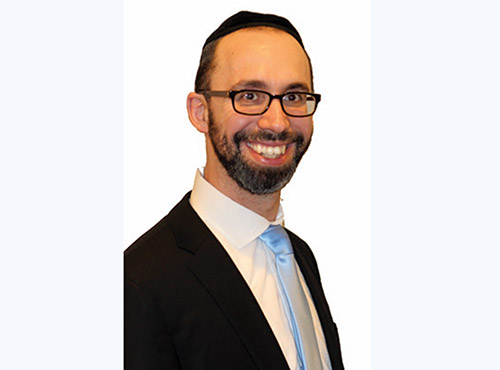
Who would you make “the face of the Jewish people”? Would it be Yaakov Avinu, whose face was engraved on the Throne of Glory? Would it be Moshe Rabbeinu or David Hamelech? Choose as you will, the Gemara (Sukkah 5b) tells us that the face of the keruvim (cherubs) that represented the Jewish people on the covering of the Aron (Holy Ark) was the face of a child. What is it about a child’s face that makes it the symbol of our ultimate relationship with Hashem?
The Baal Haturim quotes a verse in Hoshea (11:1) “Ki na’ar Yisroel ohavo—Yisrael is a youth, and I love him.” By way of further explanation: why do old people brighten up when they see young children? Why do we feel it to be more of a tragedy when a child passes away than when an elderly person does? Perhaps it’s because a child is more innocent or because a child has tremendous potential and we are sad to see the lost opportunity, a life unlived.
These explanations may be so, but the Alter from Kelm (Rav Simcha Zissel Ziv) reveals a deeper meaning, as follows: Why are we more upset and angered when the adult errs than when a child makes a mistake? One might say it’s because we expect that children will make mistakes. However if we think more deeply we will realize it’s because we know a child is receptive to learn and be trained, so his mistakes and errors can be corrected and he will grow and improve through them. However, when an adult makes a mistake we are less likely to overlook it because we are not so sure the adult will learn and not repeat the error.
The Midrash points out this idea in commenting on the pasuk (Tehillim 106:7) “Vayamru al yam b’Yam Suf, They [Bnei Yisrael] rebelled against Hashem at the Yam Suf.” This refers to the idol that Micha carried with him through the splitting of the sea. The Midrash says that the angels came to Hashem and asserted that if Bnei Yisrael can be so rebellious at Kriyat Yam Suf, they should be destroyed. Hashem responded: I will not destroy them because they are na’arim, they are like children. Yes, they made a mistake, but they are willing to learn from their mistakes and correct them for the future.
This is one of the special qualities of children—they are always learning from their experiences and developing. As people get older they tend to lose the drive to learn. They become complacent and feel secure in what they know and they develop tendencies that they don’t want to abandon. It is common to see older teenagers go to Eretz Yisrael for a year or two to learn before starting college, and come back after making major positive changes in their direction in life. Such changes are rare in older people.
With this explanation, it is quite clear why Hashem chose to have the face of a child on top of the Aron Hakodesh: Hashem relates to Bnei Yisrael as a youth, a child. Although He is far from happy with our misdeeds and mistakes, He accepts our sins with the hope that we will learn from them.
This is an extremely important lesson. A major requirement in Torah and avodat Hashem is to always be youthful—to be open and eager to learn, to grow and improve and to always be in a state of development. If we approach life in this fashion, then Hashem will relate to us according to the verse in Hoshea—Hashem will love us for we are youths.
The number of a person’s days on the planet doesn’t force him to take on some negative traits, such as complacency and inflexibility, of certain “old people.” His limbs may not be as flexible, but his mind can remain open and agile. His heart can be and should be eager to serve Hashem. He should keep the best of what he’s learned in his time and develop new and better ways and ideas.
Every Friday night and Shabbos day we read Dovid Hamelech’s description of the ideal tzadik (Tehillim 92:13-17), “Tzadik katamar yifrach … d’sheinim v’raananim yihyu.” The righteous flourish like a palm tree—they go on and on and on…fresh and energetic. Why? “L’hagid ki yashar Hashem, To tell that Hashem’s way is the correct way.”
May we be blessed to continue to grow and grow, forever young, perfecting ourselves constantly and enthusiastically in Hashem’s service.
By Rabbi Baruch Bodenheim
Rabbi Baruch Bodenheim is the associate rosh yeshiva of Passaic Torah Institute (PTI)/Yeshiva Ner Boruch. PTI has attracted people from all over northern New Jersey, including Teaneck, Bergenfield, Paramus, Rockaway and Fair Lawn. He initiated and continues to lead a full multi-level Gemara learning program in the evenings, gives Halacha and hashkafa shiurim on Shabbos and, more recently, has spread out beyond PTI to begin a weekly Beit Medrash program with in-depth chavruta learning in both Livingston and Springfield, New Jersey.










